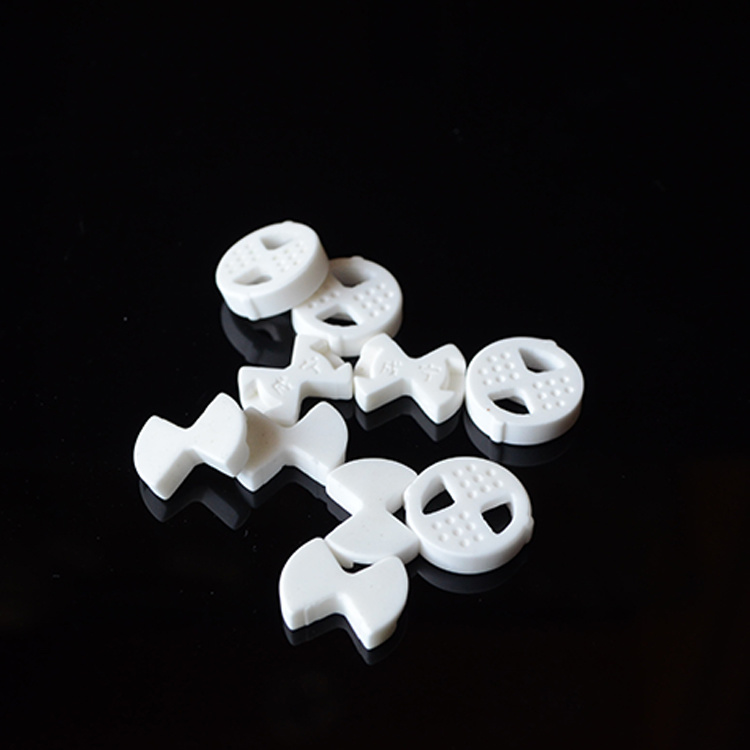
The Versatile Applications of Alumina Ceramic Substrates in Construction and Decorative Materials
Time:
2025-03-07 13:00
Source:
Alumina ceramic substrates have gained significant attention in the realms of construction and decorative materials due to their impressive mechanical and thermal properties. These substrates are primarily composed of aluminum oxide (Al2O3), which provides exceptional strength, durability, and resistance to various environmental factors. In the construction industry, the use of alumina ceramic substrates has expanded beyond traditional applications, opening new avenues for innovation and design.
One of the key benefits of alumina ceramic substrates is their high thermal stability. This characteristic makes them ideal for applications that require resistance to high temperatures and thermal shock. In buildings, these substrates can be utilized in areas exposed to fluctuating temperatures, such as facades or roofing systems. Their ability to withstand thermal gradients without cracking or deforming ensures the longevity and integrity of the structure.
In addition to thermal resistance, alumina ceramic substrates offer excellent electrical insulation properties. This makes them suitable for applications in electronic devices integrated into building materials, such as smart tiles or sensors. By incorporating alumina substrates, these innovative materials can effectively manage energy efficiency and contribute to smart building technologies.
The aesthetic potential of alumina ceramic substrates cannot be overlooked either. With a variety of finishes and textures available, they can enhance the visual appeal of spaces while maintaining functionality. Architects and designers appreciate the versatility of these substrates, which can be tailored to meet specific design requirements while adhering to structural standards.
Furthermore, alumina ceramic substrates are also environmentally friendly. They can be produced using sustainable methods, and their durability leads to reduced waste and lower maintenance requirements over time. This aligns with the growing emphasis on sustainable building practices, making alumina substrates a preferred choice for environmentally conscious projects.
When considering the integration of alumina ceramic substrates in construction and decorative applications, it is essential to understand their compatibility with various other materials. Proper bonding techniques and surface treatments can enhance their performance and aesthetic appeal, ensuring a seamless integration into overall design schemes.
In conclusion, alumina ceramic substrates are a remarkable solution in the construction and decorative materials sector. Their unique properties such as thermal stability, electrical insulation, aesthetic flexibility, and sustainability make them invaluable in modern building practices. As the industry continues to evolve, the demand for innovative materials like alumina substrates will undoubtedly grow, paving the way for new architectural possibilities and advancements in building technology. By exploring the potential of these versatile substrates, professionals can unlock new opportunities for creativity and efficiency in their projects.
One of the key benefits of alumina ceramic substrates is their high thermal stability. This characteristic makes them ideal for applications that require resistance to high temperatures and thermal shock. In buildings, these substrates can be utilized in areas exposed to fluctuating temperatures, such as facades or roofing systems. Their ability to withstand thermal gradients without cracking or deforming ensures the longevity and integrity of the structure.
In addition to thermal resistance, alumina ceramic substrates offer excellent electrical insulation properties. This makes them suitable for applications in electronic devices integrated into building materials, such as smart tiles or sensors. By incorporating alumina substrates, these innovative materials can effectively manage energy efficiency and contribute to smart building technologies.
The aesthetic potential of alumina ceramic substrates cannot be overlooked either. With a variety of finishes and textures available, they can enhance the visual appeal of spaces while maintaining functionality. Architects and designers appreciate the versatility of these substrates, which can be tailored to meet specific design requirements while adhering to structural standards.
Furthermore, alumina ceramic substrates are also environmentally friendly. They can be produced using sustainable methods, and their durability leads to reduced waste and lower maintenance requirements over time. This aligns with the growing emphasis on sustainable building practices, making alumina substrates a preferred choice for environmentally conscious projects.
When considering the integration of alumina ceramic substrates in construction and decorative applications, it is essential to understand their compatibility with various other materials. Proper bonding techniques and surface treatments can enhance their performance and aesthetic appeal, ensuring a seamless integration into overall design schemes.
In conclusion, alumina ceramic substrates are a remarkable solution in the construction and decorative materials sector. Their unique properties such as thermal stability, electrical insulation, aesthetic flexibility, and sustainability make them invaluable in modern building practices. As the industry continues to evolve, the demand for innovative materials like alumina substrates will undoubtedly grow, paving the way for new architectural possibilities and advancements in building technology. By exploring the potential of these versatile substrates, professionals can unlock new opportunities for creativity and efficiency in their projects.
Alumina Ceramic Substrate

